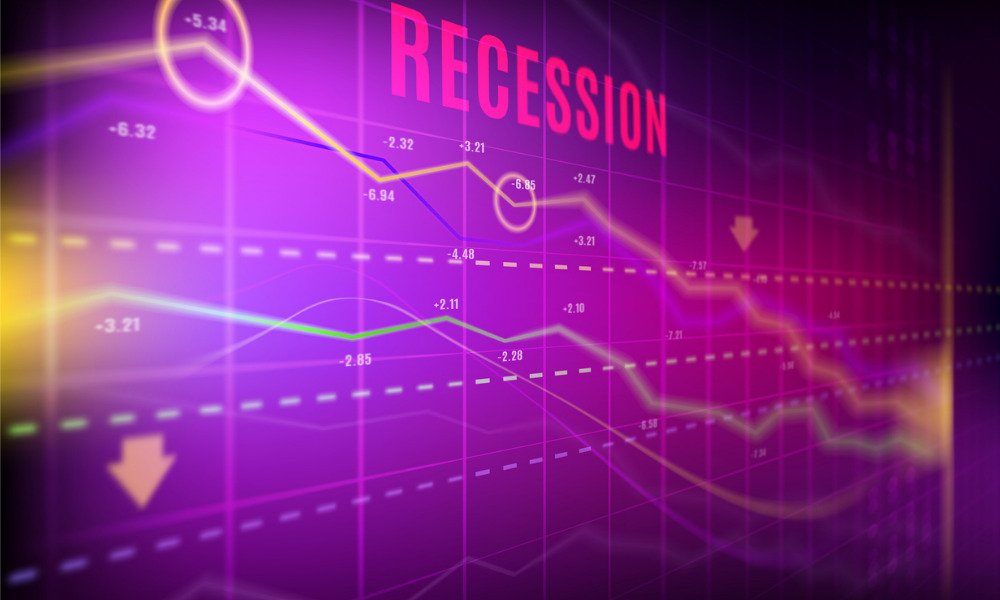Concerns remain even if markets think central banks are almost done raising rates

We may have passed the first quarter of 2023, but some experts still think there’s a rising risk of recession during the coming year.
“We are inclined to think that the risk has gone up somewhat,” Eric Lascelles, the chief economist for RBC Global Asset Management (GAM) said.
“Whereas the risk of a U.S. recession over the coming year was at around 70% a few months ago, perhaps it is now up to an 80% chance. A soft landing remains technically possible, but it is harder to achieve than before.”
Lascelles made his prediction after weighing recent developments that pushed in different directions. On the one hand, ongoing economic resilience argued that the risk of recession is falling. But, then, the financial stress and insufficiently cooperative inflation – and the need to tame it with monetary policy – convinced him that the recession risk is still rising and something to be aware of.
In reviewing the landscape, Lascelles noted that inflation is remaining stubborn. While It continues to descend from its peak, the rate of improvement has slowed in recent months.
In February, the U.S. Consumer Price Index (CPI) fell to 6.0% from 6.4% year over year. Core inflation declined to 5.5% from 5.6% year over year, but headline core prices rose by 0.4% and 0.5% from the previous month. While that was an improvement from last spring, it still impacted fuel, transportation, housing, and food and beverages, so annualized to inflation in the realm of 5-6% rather than the central banks’ desired 2%.
Meanwhile, Lascelles noted that outside of the U.S., the recent inflation deceleration has been less favourable than in late 2022. While Canadian inflation may have fallen to 5.2% from 5.9% year-over-year in February, the monthly change was still up .4% month over month. The situation remains similar to the U.S., including the fact that good inflation is cooperating while service inflation is much more resistant to decline.
In Europe, meanwhile, the February CPI only decreased slightly – to 8.5% from 8.6% year over year. The monthly change was still a hot +.8% month over month. Meanwhile, in the United Kingdom, the February inflation print actually accelerated to 10.4% from 10.1% year over year.
While much of the global supply chain pressure has resolved and the average hourly wages have been decelerating for awhile, Lascelles noted that inflation-adjusted wages are still in line with the pre-pandemic trend. The central banks’ juggling act to tame inflation without crimping economic activity has become more complicated with the recent banking stresses, but he added that “the markets think these central banks are near the finish line of their rate-raising journey”.
In conclusion, he said, “we wonder whether markets are exaggerating the monetary policy implications of recent banking stress. Those issues can better be addressed on an ad hoc basis, or via bank-targeting liquidity programs and deposit insurance tweaks rather than abandoning the inflation-fighting process altogether.”



